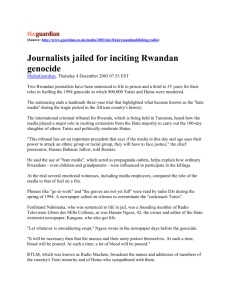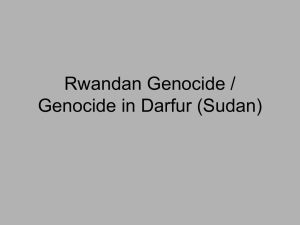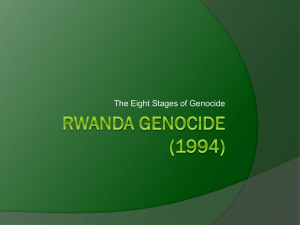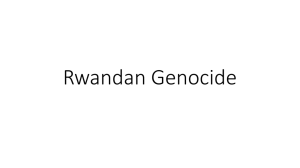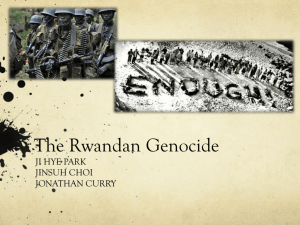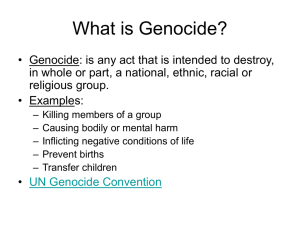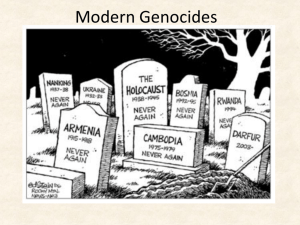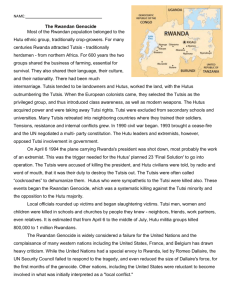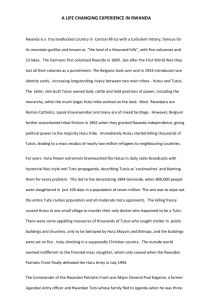advertisement
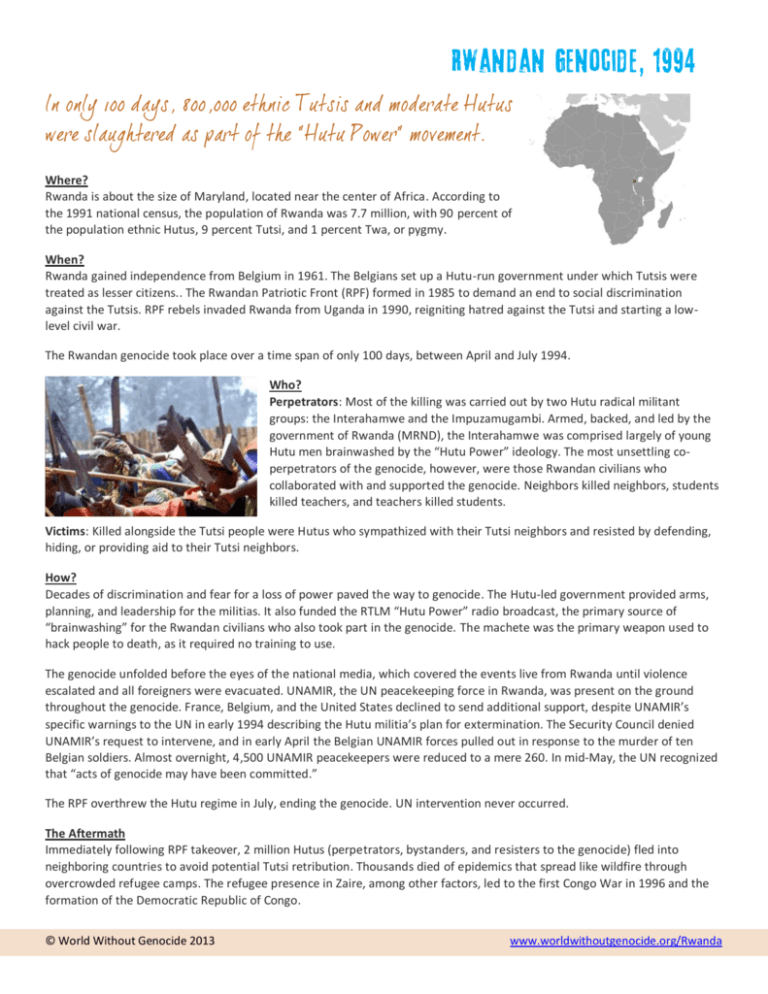
Rwandan Genocide, 1994 Where? Rwanda is about the size of Maryland, located near the center of Africa. According to the 1991 national census, the population of Rwanda was 7.7 million, with 90 percent of the population ethnic Hutus, 9 percent Tutsi, and 1 percent Twa, or pygmy. When? Rwanda gained independence from Belgium in 1961. The Belgians set up a Hutu-run government under which Tutsis were treated as lesser citizens.. The Rwandan Patriotic Front (RPF) formed in 1985 to demand an end to social discrimination against the Tutsis. RPF rebels invaded Rwanda from Uganda in 1990, reigniting hatred against the Tutsi and starting a lowlevel civil war. The Rwandan genocide took place over a time span of only 100 days, between April and July 1994. Who? Perpetrators: Most of the killing was carried out by two Hutu radical militant groups: the Interahamwe and the Impuzamugambi. Armed, backed, and led by the government of Rwanda (MRND), the Interahamwe was comprised largely of young Hutu men brainwashed by the “Hutu Power” ideology. The most unsettling coperpetrators of the genocide, however, were those Rwandan civilians who collaborated with and supported the genocide. Neighbors killed neighbors, students killed teachers, and teachers killed students. Victims: Killed alongside the Tutsi people were Hutus who sympathized with their Tutsi neighbors and resisted by defending, hiding, or providing aid to their Tutsi neighbors. How? Decades of discrimination and fear for a loss of power paved the way to genocide. The Hutu-led government provided arms, planning, and leadership for the militias. It also funded the RTLM “Hutu Power” radio broadcast, the primary source of “brainwashing” for the Rwandan civilians who also took part in the genocide. The machete was the primary weapon used to hack people to death, as it required no training to use. The genocide unfolded before the eyes of the national media, which covered the events live from Rwanda until violence escalated and all foreigners were evacuated. UNAMIR, the UN peacekeeping force in Rwanda, was present on the ground throughout the genocide. France, Belgium, and the United States declined to send additional support, despite UNAMIR’s specific warnings to the UN in early 1994 describing the Hutu militia’s plan for extermination. The Security Council denied UNAMIR’s request to intervene, and in early April the Belgian UNAMIR forces pulled out in response to the murder of ten Belgian soldiers. Almost overnight, 4,500 UNAMIR peacekeepers were reduced to a mere 260. In mid-May, the UN recognized that “acts of genocide may have been committed.” The RPF overthrew the Hutu regime in July, ending the genocide. UN intervention never occurred. The Aftermath Immediately following RPF takeover, 2 million Hutus (perpetrators, bystanders, and resisters to the genocide) fled into neighboring countries to avoid potential Tutsi retribution. Thousands died of epidemics that spread like wildfire through overcrowded refugee camps. The refugee presence in Zaire, among other factors, led to the first Congo War in 1996 and the formation of the Democratic Republic of Congo. © World Without Genocide 2013 www.worldwithoutgenocide.org/Rwanda

